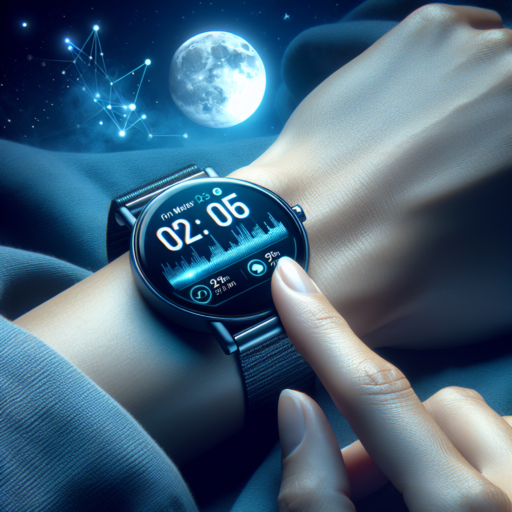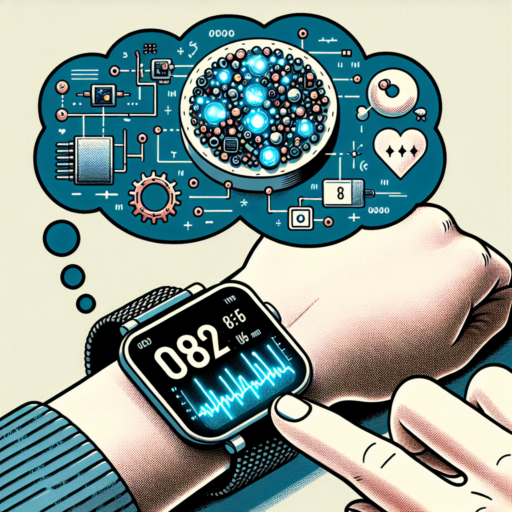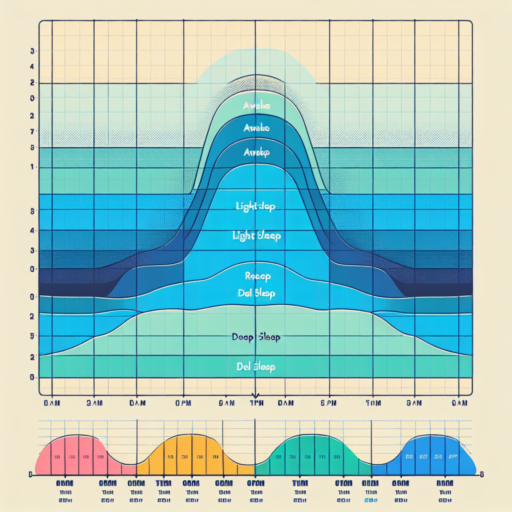Top Watches to Track Sleep in 2023
In the quest for better sleep and health, technology has gifted us with innovative tools to understand and enhance our sleep patterns. Among these, watches designed to track sleep are standing out in 2023, offering an amalgamation of features that cater to the diverse needs of the modern individual. From sleek designs to advanced biometric sensors, the options available today mean that there’s a sleep tracker for virtually everyone.
Advancements in technology mean that 2023’s top sleep tracking watches are not just about monitoring the duration of sleep anymore. They delve into the quality of sleep, distinguishing between light, deep, and REM cycles, and providing insights into how you can improve your sleep health. Many of these devices also incorporate features like heart rate monitoring, stress analysis, and even smart alarms to gently wake you up at the optimal point in your sleep cycle.
For the health-conscious and tech-savvy, these watches have become indispensable tools. They offer a deeper understanding of one’s own body and enable personalized interventions. As we continue to navigate a world where stress and screen time are on the rise, the importance of quality rest cannot be overstated. Thus, having a device that not only tracks but also analyzes and suggests improvements for your sleep is invaluable.
How Does a Sleep Tracking Watch Work?
Sleep tracking watches are ingenious devices designed to monitor your sleep patterns and offer insights into your sleep health. At their core, these gadgets utilize a combination of sensors and advanced algorithms to provide a comprehensive analysis of your sleep. But how exactly do they accomplish this feat? Let’s delve into the mechanism of action behind a sleep tracking watch.
Firstly, sleep tracking watches measure your physical movement through accelerometers. These sensors are crucial for detecting any motions during your sleep, such as tossing and turning. The device correlates periods of inactivity with sleep, assuming that minimal movement signifies that you’re asleep. However, to enhance accuracy, sleep tracking watches don’t solely rely on motion detection.
Another pivotal feature is heart rate monitoring. By observing changes in your heart rate, sleep tracking watches can infer the different stages of sleep you cycle through at night. For instance, a decrease in heart rate is often associated with deeper sleep phases. Additionally, some advanced models also measure blood oxygen levels and skin temperature to provide even more detailed sleep insights. These metrics help paint a richer picture of your sleep architecture and quality.
Integrating all this data, the device employs sophisticated algorithms to analyze your sleep patterns. It considers the duration, consistency, and quality of your sleep across these various metrics to offer personalized feedback and suggestions. Through these insights, users can identify potential areas for improvement and make informed decisions to enhance their sleep health.
Benefits of Using a Watch to Track Your Sleep
When considering a holistic approach to wellness, sleep emerges as a foundational pillar. In recent years, innovative technology has enabled us to understand and optimize our sleep patterns better. One such advancement is the use of smartwatches and fitness trackers with sleep tracking capabilities. Here, we delve into the benefits of utilizing a watch to monitor sleep patterns.
Enhanced Sleep Quality Awareness
First and foremost, using a watch to track sleep can significantly enhance one’s awareness of sleep quality. These devices provide valuable insights into sleep phases, including deep, light, and REM sleep, alongside wake times. By offering a detailed breakdown of your sleep cycle, a watch empowers you with the knowledge to recognize patterns or issues in your sleep behavior. This awareness is the first step towards improving sleep quality and, by extension, overall health and well-being.
Improved Sleep Hygiene
Furthermore, this constant monitoring leads to the cultivation of better sleep hygiene. With detailed data at your fingertips, it becomes feasible to pinpoint lifestyle habits or environmental factors that may adversely affect your sleep. For instance, you might observe a correlation between late-night screen time and difficulty falling asleep or discover that consuming caffeine late in the day impacts your sleep phases. Armed with this information, you can make informed adjustments to your evening routine, thereby improving your sleep hygiene.
In conclusion, the benefits of using a watch to track sleep extend beyond mere curiosity. It’s about gaining actionable insights into one of the most crucial aspects of human health—sleep. By leveraging the capabilities of modern technology, individuals can embark on a path toward better sleep awareness, improved sleep hygiene, and ultimately, enhanced health and well-being.
No se han encontrado productos.
Comparing Features of the Best Sleep Tracking Watches
When considering sleep tracking watches, it’s essential to understand the variety of features they offer to enhance sleep quality. Each brand and model comes with its unique set of functionalities aimed at providing detailed insights into your sleep patterns. From monitoring sleep stages to offering relaxation techniques before bedtime, these devices are designed to help users achieve a better night’s sleep.
Key Features Across Top Models
The top sleep tracking watches on the market today share several advanced features. Most notable among these are the abilities to track sleep duration, recognize sleep stages including REM, light, and deep sleep, and provide a sleep score to help users easily understand their sleep quality. Additionally, many of these watches offer silent alarms to wake users gently, without disturbing their partner. However, differences such as battery life, the specificity of sleep feedback, and the integration with other health tracking metrics like heart rate and oxygen levels can make a significant difference in user preference.
Unique Offerings
Beyond the basics, certain sleep tracking watches stand out by offering unique features. For instance, some watches incorporate temperature tracking to see how body and ambient temperatures affect sleep. Others might offer specific insights into breathing patterns or provide customized sleep coaching based on the data collected. These specialized features can be a game-changer for users looking to deeply understand and improve their sleep health.
In comparing the best sleep tracking watches, it’s clear that while they share many fundamental features, their unique aspects and the detailed level of feedback they offer can significantly influence their efficacy and appeal to different users. Whether you prioritize battery life, integrated health monitoring, or detailed sleep analysis, there’s a model designed to suit your needs.
Setting Up Your Watch for Accurate Sleep Tracking
To ensure your watch provides the most accurate sleep tracking data, there are several steps you can take. First and foremost, it’s crucial to have your watch’s software updated to the latest version. Manufacturers often release updates that enhance the device’s capabilities, including improved tracking algorithms. This involves checking for updates in your watch’s companion app and ensuring your device is charged enough to complete the update process.
Adjusting Sleep Sensitivity Settings
Depending on your watch model, you might find options to adjust sleep sensitivity settings. These settings play a vital role in how your device detects sleep. For lighter sleepers, increasing the sensitivity can help in accurately capturing those restless nights. Conversely, decreasing sensitivity might be beneficial for those who move a lot in their sleep but don’t want those movements to count as awake time. Navigate through your watch’s settings or app to find these options.
Wearing Your Watch Correctly at Night
How you wear your watch during sleep significantly affects its tracking accuracy. The watch should be snug but comfortable on your wrist — not too tight to cause discomfort, nor too loose to move around and lose contact with your skin. The sensors need consistent skin contact to monitor your sleep patterns effectively. Moreover, wearing it on the correct location of your wrist, as per the manufacturer’s instructions, ensures the sensors are correctly aligned to gather data.
Lastly, incorporating these steps into your nightly routine can greatly improve the sleep tracking performance of your watch. Remember, the goal is for the device to become a seamless part of your sleep hygiene, providing detailed insights into your sleep patterns without causing disruption or discomfort. By updating the software, adjusting sensitivity settings, and wearing your watch correctly, you’ll be setting the stage for accurate sleep monitoring that can help you understand and improve your sleep quality over time.
Interpreting Data from Your Sleep Tracking Watch
Understanding the myriad of data your sleep tracking watch presents each morning can significantly improve your sleep quality, yet it might initially seem like deciphering an enigmatic puzzle. These devices track various metrics such as sleep duration, sleep stages, and periods of wakefulness, offering a comprehensive overview of your sleep patterns. By interpreting this data accurately, you can identify potential disruptions and make informed decisions to enhance your sleep hygiene.
Deciphering Sleep Stages
Sleep stages, including light sleep, deep sleep, and REM (Rapid Eye Movement) sleep, are critical to understanding the quality of rest you’re getting each night. Each stage plays a unique role in sleep health, with deep sleep aiding physical recovery and REM sleep facilitating cognitive restoration. By examining the proportions of each stage your sleep tracker reports, you can assess whether you’re achieving a healthy balance or if adjustments to your routine might be necessary.
Understanding Sleep Duration and Consistency
Sleep duration is another vital metric to consider. Adults typically need between 7 to 9 hours of sleep per night, but just as important is the consistency of your sleep schedule. A chaotic sleep pattern can disrupt your body’s circadian rhythm, leading to poor sleep quality even if the duration seems adequate. Your sleep tracker’s data on nightly sleep totals and variances can reveal if you’re maintaining a regular schedule or fluctuating widely, offering clues on areas for improvement.
Tips for Improving Sleep Quality with Sleep Tracking Watches
Improving your sleep quality is a priority for many, especially in our fast-paced world where quality rest is often undervalued. Sleep tracking watches have emerged as a game-changer in understanding and enhancing our sleep patterns. Here, we explore practical tips to make the most out of your sleep tracking watch and ensure a night of restorative sleep.
Understanding Your Sleep Data
Becoming familiar with the data your sleep tracking watch provides is the first step towards better sleep. Look for patterns in your sleep phases, such as deep sleep and REM cycles, and note any irregularities in your sleep duration. Understanding these patterns can help you identify aspects of your sleep that need improvement and track the effectiveness of changes you make.
Optimizing Your Sleep Environment
With your sleep data in hand, it’s essential to adjust your sleep environment accordingly. Ensure your bedroom is conducive to sleep by maintaining a cool, dark, and quiet atmosphere. Consider using your sleep tracking watch to experiment with different room temperatures and lighting conditions to find what best suits your sleep patterns. This trial-and-error approach can be significantly more effective when you have concrete data to guide your adjustments.
Adjusting Your Pre-Bedtime Routine
Your activities before bed play a crucial role in your sleep quality. Use your sleep tracking watch to observe how different pre-bedtime routines affect your sleep. Activities such as reading or meditating might show positive impacts on your sleep data, while screen time or heavy meals might correlate with disturbances in your sleep patterns. Making small, mindful changes based on your sleep data can lead to significant improvements in overall sleep quality.
Frequently Asked Questions About Sleep Tracking Watches
When it comes to monitoring sleep patterns and improving sleep quality, many people turn to sleep tracking watches. These innovative devices have garnered much attention, leading to a plethora of questions about their functionality, accuracy, and impact on sleep health. Here, we explore some of the most frequently asked questions surrounding these high-tech sleep assistants.
How Do Sleep Tracking Watches Work?
Sleep tracking watches utilize a combination of motion detection technologies and advanced algorithms to analyze sleep cycles. By monitoring movements through accelerometers and sometimes heart rate sensors, these watches can discern between different sleep stages such as light, deep, and REM sleep. This data provides users with insights into their sleep patterns, helping them identify areas that need improvement for a better night’s rest.
Are Sleep Tracking Watches Accurate?
While sleep tracking watches offer a convenient and sophisticated way to monitor sleep, questions about their accuracy are common. It’s important to note that while these devices provide valuable insights, they may not always match the precision of professional sleep studies conducted in controlled environments. However, for those looking to gain a general understanding of their sleep patterns, sleep tracking watches are a reliable tool that can offer significant information about sleep quality and duration.
With technology continuously evolving, sleep tracking watches are becoming an indispensable tool for those looking to enhance their sleep quality. By understanding how these devices work and recognising their potential limitations, individuals can effectively use sleep tracking watches to embark on a journey towards improved sleep health.
How to Choose the Right Sleep Tracking Watch for Your Needs
Choosing the right sleep tracking watch can significantly enhance your understanding of your sleep patterns and help improve sleep quality. To make an informed decision, it’s essential to consider several key factors tailored to your specific needs.
Understand Your Sleep Goals
Before diving into the multitude of options available, clarify what you aim to achieve by monitoring your sleep. Whether it’s to understand your sleep cycles better, identify sleep disturbances, or improve sleep hygiene, your goal will guide you toward the right features in a sleep tracking watch. For instance, if improving deep sleep is your target, look for a watch that provides detailed insights into sleep stages.
Key Features to Look For
Not all sleep tracking watches are created equal, and their features can vastly differ. Prioritize watches that offer comprehensive sleep analysis, including REM cycles, light and deep sleep stages, and sleep efficiency scores. Additionally, consider watches with built-in heart rate monitors and oxygen saturation sensors for a more in-depth analysis. The accuracy of the sensor technology used is paramount for reliable data. Also, evaluate the battery life and ensure it’s sufficient to track a full night’s sleep without needing a recharge.
Personal comfort and the ease of use of the device are equally crucial. A bulky watch could disrupt your sleep rather than improve it. Therefore, opt for a design that is comfortable to wear all night and whose interface is user-friendly. Furthermore, compatibility with your smartphone or other devices for seamless data syncing and analysis is a feature that should not be overlooked.
Customer Reviews: Real Experiences with Sleep Tracking Watches
The rise of sleep tracking watches has brought a new dimension to understanding and improving sleep quality. A significant factor behind their popularity is the real-life testimonials from users who have experienced transformative benefits. These personal accounts shed light on the effectiveness of these devices in monitoring sleep patterns, identifying issues, and ultimately, enhancing sleep quality.
One common thread among customer reviews is the appreciation for the detailed sleep analysis provided by these watches. Users often highlight how the data has helped them pinpoint aspects of their sleep hygiene that need improvement, such as irregular sleep schedules or disturbances during the night. Furthermore, many note the motivational aspect of tracking sleep progress, which encourages them to adopt healthier sleep habits.
Despite the overall positive feedback, it’s essential to acknowledge the diverse experiences shared in customer reviews. While many users report a significant improvement in their sleep quality and daytime energy, a minority have noted challenges with the accuracy of sleep tracking data or discomfort wearing the watch overnight. These insights are crucial for potential buyers to consider, offering a balanced view of the product’s benefits and limitations.




